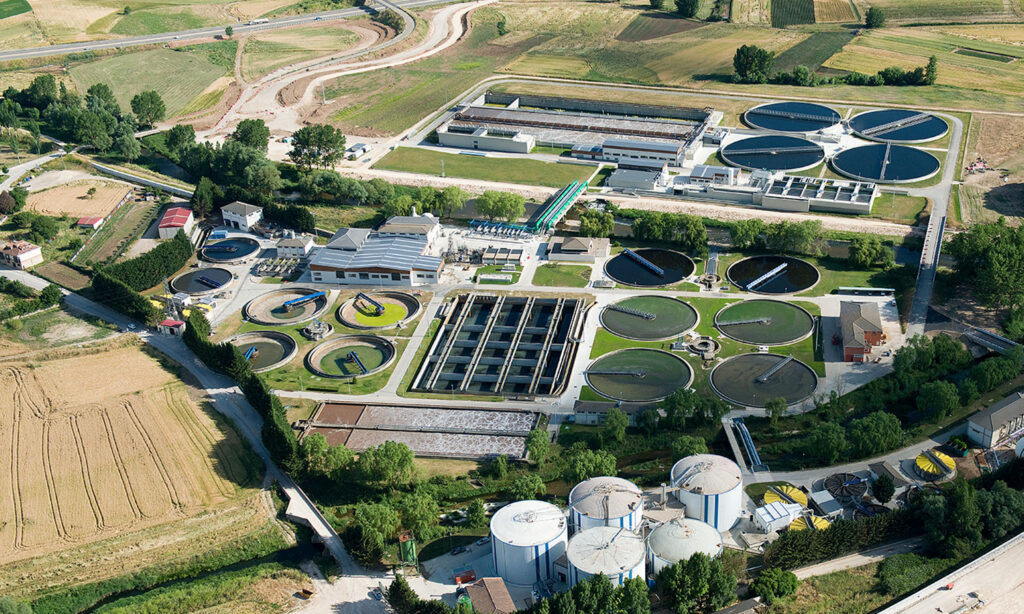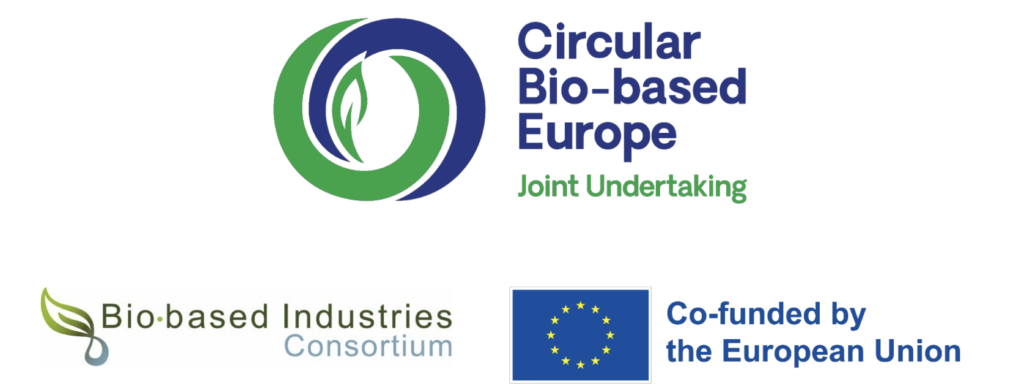Innovative CO2 Capture: Recovering Wastewater CO2 for Sustainable Polymer Production
Interview with Federico Ferrari from the EU and CBE JU funded HICCUPS project

The HICCUPS project aims to efficiently convert biogenic CO₂ from wastewater treatment plants into bio-based polymers for packaging. Using an electrochemical process, CO₂ from sludge is transformed into monomers and polymerised into polylactic-co-glycolic acid (PLGA). This biodegradable polymer, with excellent barrier properties, offers a renewable alternative to fossil-based polyethylene. To showcase its potential, PLGA-based packaging materials, including coated paper for food packaging and moulded plastic, will be developed.

Federico Ferrari is leading Work Package 1 (WP1) of the HICCUPS project, which focuses on demonstrating CO₂ capture and purification from biogas produced at a wastewater treatment plant operated by ACCIONA.
He works at ACCIONA Water Business in the Innovation Department, as a project manager in the wastewater treatment and resources recovery area.
ACCIONA specializes in comprehensive water management, including the whole water cycle. The company designs, builds, and operates distribution networks, and drinking water, desalination, and wastewater treatment plants around the world.
Why is capturing CO₂ from wastewater treatment plants important, and how does it contribute to sustainability?
Wastewater treatment plants (WWTP) are often neglected as significant CO₂ emitters. According to EU taxonomy compass, anaerobic digestion of sewage sludge contributes to climate mitigation when the produced biogas is used directly for the generation of electricity or heat. However, the biogas from WWTPs includes a considerable amount of CO₂ (30-40%) accompanying the CH4 (60-70%) that even if considered biogenic CO₂ it is currently being emitted to the atmosphere. Although there are other impurities (N2, H2S, O₂ and volatile organic compounds) in the biogas, due to its high concentration, separating the CO₂ from this stream is considered easier and more convenient for its valorisation when compared to other sources as flue gas where the presence of N2, NOX/SOX add complexity to the process. Furthermore, this would create a side stream much richer in bio-methane than the starting biogas, potentially enabling its injection in the natural gas grid, or to be used as vehicle fuel or even as feedstock in chemical industry, to obtain another source of benefits. To date, only few WWTP have integrated a carbon capture unit in their upgrading process. An example is the Arabern WWTP (Switzerland) which can capture and liquefy up to 2,000 tons of CO₂ per year and proved that CO₂ capture in WWTP is a profitable business model.
How does AQUALUNG’s technology turn CO₂ from wastewater into something useful, like bioplastics?
CO₂ from biogas has to be separated a priori the utilization process for conversion into valuable products. AQUALUNG’s membrane separation process (capture technology) enables to reduce the volume of the gas treated (65% of gas removed as biomethane on the upstream) and simultaneously meets the purity specifications for CO₂ required for the utilization process in the downstream side. Such an interim process buffer also regulated the flow and quality of CO₂ delivered to the electrochemical process.
What makes the membranes used in CO₂ capture special, and how do they improve efficiency?
AQUALUNG’s process works with facilitated transport membranes which can operate at lower pressure ratio (feed to permeate pressure) compared to its competitors. Such low-pressure processes decrease cost and the facilitated transport process also delivers high quality CO₂ purity on the downstream side which is required for the utilization. Additionally, AQUALUNG’s membranes operate under high humidity which avoids the need for pre-treatment (dehumidification system) leading to much simpler process than other membrane solutions.
What are the main challenges in building a real-world demonstration plant for capturing CO₂ at a wastewater treatment facility?
Impurities present in biogas can cause problems to membrane lifetime or safe operations of membrane systems especially in humid and small-scale operations. Membrane manufacturing at low cost and high quality is also another challenge in real-world. AQUALUNG is working with state-of-the-art membrane manufacturer to derisk the latter challenge.
How will you ensure that the CO₂ capture technology developed in HICCUPS can be used on a larger scale in the future?
The carbon capture system developed in the HICCUPS project is designed for easy scalability, leveraging hollow fiber membrane technology and a modular process architecture. This scalability is achieved through a two-pronged approach. First, by ensuring the production and replicability of membrane modules. The manufacturing of these modules is a critical component of the upscaling strategy and is carried out by AQUALUNG, together with its partners, who are responsible for membrane upscaling, testing, and quality assurance. Second, by designing and demonstrating a robust, modular, and scalable process that can be adapted to larger gas volumes simply by increasing the number of capture units. This approach enables the system to handle the full gas flow from any WWTP. Within the HICCUPS project, this is validated through demonstration activities conducted under WP1, involving all partners in the consortium. Additionally, AQUALUNG’s patented membranes operate at low pressures, significantly reducing energy consumption. This makes the carbon capture process more cost-effective than other membrane technologies and increases its attractiveness in the market
Will adding CO₂ capture technology change how wastewater treatment plants operate, or will it fit smoothly into existing systems?
As for biogas upgrade to biomethane, carbon capture targets biogas refinement without disrupting core water and sludge treatment processes. By separating CO₂ from biogas (typically 30-45% of content), the resulting biomethane (if ≥95% CH₄) gains value for grid injection or renewable vehicle fuel, while captured CO₂ can also be monetized (e.g., industrial use as the one under study in this project or carbon credits). For this reason, a CO₂ capture plant would not imply fundamental changes in the WWTP operation. Nevertheless, the opportunity of valorising the methane richer side stream out of the premises would divert the biogas from its conventional applications, generally cogeneration. This fact may require alternative energy sources, however only in the case biomethane is valorised elsewhere.
However, the integration of CO₂ capture into WWTPs will increase operation and maintenance costs and the requirements of skilled personnel for operation troubleshooting. A successful business case and a robust value chain of the produced CO₂ and eventually, biomethane, will be required to compensate these costs.

Funded by the European Union. Views and opinions expressed are however those of the author(s) only and do not reflect those of the European Union. Neither the European Union nor the granting authority can be held responsible for them. The project is supported by the Circular Bio-based Europe Joint Undertaking and its members.
The project is supported by the Circular Bio-based Europe Joint Undertaking and its members.
Source: HICCUPS, original text, 2025-05-22.
